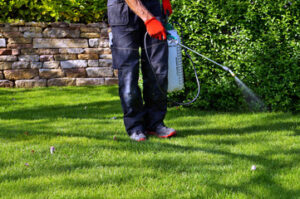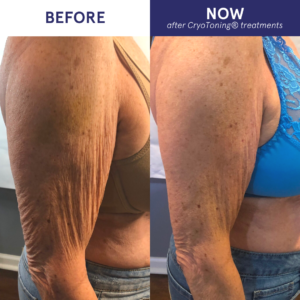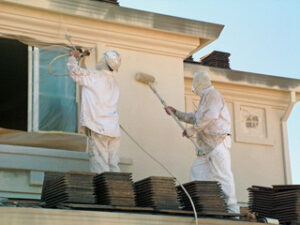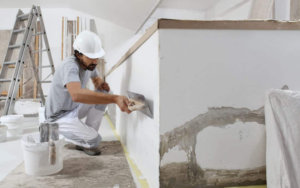Asphalt is a great paving material that is safe and durable under heavy traffic and weather conditions. However, asphalt needs to be properly maintained to maximize its lifespan. Contact Asphalt Paving Charleston now!
The first step is proper planning. Once a plan is set, the next step is creating the asphalt mix. The mixture is made in an asphalt plant and kept at a high temperature to prevent the mixture from cooling during paving.

Asphalt is a primary component of America’s roadway system, with over 94 percent of all paved roads surfaced with it. It’s also a primary construction material in parking lots, airport runways, railway tracks, and sidewalks. With its infinite recyclability, sustainability benefits, and environmental impact reductions, asphalt is the obvious choice for modern, environmentally conscious construction projects.
Asphalt’s eco-friendly qualities stem from its 100% recyclability, energy-efficient production, and paving practices. Using recycled asphalt materials significantly reduces the need to produce new pavement and conserves valuable natural resources such as aggregates and bitumen. By using recycled materials, contractors can also earn credits for sustainability initiatives and green building standards.
Another factor that contributes to asphalt’s eco-friendly characteristics is its ability to effectively drain water and minimize soil and surface runoff. This is especially important in urban areas where excessive surface runoff can damage vegetation and increase the risk of flooding. Asphalt’s permeable surface allows rainwater to filter through, replenish groundwater channels, and reduce the need for stormwater drainage systems that require substantial energy and resource consumption.
As an added benefit, asphalt’s permeable surface also reduces traffic noise pollution. By absorbing sound, asphalt can dramatically decrease the amount of noise produced by vehicles, making for a quieter, more peaceful road.
In terms of sustainable paving, asphalt can also be made with additives and other ingredients that are sourced from renewable resources. This reduces the need for traditional petroleum-based binders, as well as lowering energy consumption and greenhouse gas emissions during the asphalt production process.
Other environmentally friendly asphalt paving practices include minimizing fuel usage during construction. This can be accomplished by reducing hauling distances, employing on-site recycling, implementing limitations on vehicle idling and retrofitting equipment with better fuel efficiency technology.
Additionally, paving with low slump can help limit the amount of aggregates used for the mixture. This in turn, reduces waste and the need for further processing. Finally, the asphalt mix can be designed with low VOC (Volatile Organic Compound) contents to further lower environmental impacts. All these factors make for a truly sustainable and eco-friendly asphalt mixture.
Durable
Asphalt is a durable material that can withstand heavy traffic and harsh weather conditions. It is also an environmentally sustainable option that uses recycled materials. In addition to providing a smooth ride for drivers, asphalt is easy to maintain and can be designed in many different ways. It can be tinted, colored, stamped or textured to add visual interest and design flair. In fact, a well-constructed asphalt surface will last for years, reducing the need for costly repairs.
Asphalt consists of a mixture of bitumen (a black, sticky, semi-solid form of petroleum) and aggregate materials like sand and crushed stone. The mixture is heated in an asphalt plant and transported to the construction site by dump trucks. Once the mixture is delivered to the work site it is poured and compacted. This process is very quick, which means there is no need to wait for the pavement to cure. This allows traffic to be moved through the area more quickly, and it reduces disruption and delays for commuters.
The durability of asphalt is enhanced by the use of a binder course, which helps to distribute traffic and environmental loads over the underlying base course. This helps to minimize rutting, which can occur when the surface layer is stressed more than the underlying layers can handle. The binder course is composed of a mix that includes a high percentage of fine-graded aggregates, and it can be made with either hot or cold mix asphalt.
As the paving process continues, it is important to ensure that the asphalt is properly compacted to prevent structural problems. Proper compaction is determined by evaluating the density, consistency and overall quality of the asphalt. A professional paving contractor will follow the best practices for compaction, and they will take care to keep the work area as clean as possible.
Once the paving project is complete, it is important to protect your investment by conducting regular maintenance. This should include cleaning, filling in cracks and potholes and seal coating the surface every few years. It is also recommended to avoid driving on the paved area until it is completely dry, as exposure to extreme heat can cause the asphalt to become brittle and weaken over time.
Aesthetically Pleasing
Asphalt is an attractive option for paved surfaces, combining both durability and visual appeal. Its ability to withstand regular traffic, harsh weather conditions, and wear and tear ensures that asphalt is easy to clean and maintain, maintaining its appearance over time. Its versatile aesthetics also make it a popular choice for commercial properties, supporting various design styles.
The paving process involves mixing asphalt cement and aggregate materials together to create a smooth surface for vehicles to travel on. This material is then heated and applied to the prepared site using an asphalt paver, a large machine designed to spread the hot asphalt evenly across the ground. Aesthetically, asphalt pavements can be finished with different colors and textures to enhance their appearance. This is done by adding pigments to the asphalt mix during production, resulting in a wide range of hues.
One of the most popular options for enhancing asphalt’s look is black asphalt, which is a cost-effective way to improve the visual appeal of any paved surface. This option provides a classic look that complements nearly any architectural style, and can be easily painted with markings to clearly indicate parking spaces or road lines.
Another way to improve asphalt’s visual appeal is through crack filling and resurfacing, which are important maintenance techniques that protect the asphalt from damage caused by water, oils, and other chemicals. These processes are also a great way to restore old asphalt and prolong its life.
In addition, regular seal coating can protect the surface from harmful elements, reducing fading and ensuring a more vibrant color. This is particularly helpful for high-traffic areas, where dirt, dust, and grime can accumulate quickly.
Asphalt is also known for its speed of construction and ease of repairs, making it a practical choice in high-traffic areas. It can be installed more quickly than other paving materials, and its smoothness reduces noise from traffic, providing safety for pedestrians and drivers alike.
A well-maintained asphalt surface can last for many years with minimal upkeep requirements, making it a smart investment in a property’s value and appearance. Fort Lee Paving offers a variety of services to help clients customize and protect their asphalt pavement, including sealing, crack filling, resurfacing, and line painting.
Reduced Noise Pollution
Asphalt pavements are known for their ability to absorb road noise, which makes them a preferred choice for city streets and residential areas. This feature not only improves living conditions for urban residents, but also reduces the impact of traffic noise on wildlife. This is especially important as it reduces disruption to natural habitats and prevents unnecessary stress levels for urban animals.
Although noise-reducing asphalt requires an initial investment, it offers numerous financial benefits. The increased quality of life for urban residents can increase property values and attract businesses to the area. Additionally, the use of eco-friendly materials and sustainable production processes aligns with smart city initiatives and promotes a more environmentally friendly environment.
Among the most popular forms of asphalt, stone mastic asphalt (SMA) is a highly effective noise-reducing pavement technology. This type of asphalt uses a thick base course that bears the main load above an unbound granular layer. An intermediate (binder) course is then placed over the base course, followed by a 30-40 mm surface course that can be recycled and reused several times over the lifespan of the road. Adding rubberized asphalt to this system increases its sound-absorbing properties even further.
The use of porous aggregates in asphalt mixes also helps to reduce noise pollution. These materials allow for a high level of air voids, which helps to lower highway noise levels by up to 3 decibels. Porous aggregates also help to improve water drainage, reducing the risk of hydroplaning during rainy conditions.
Noise-reducing asphalt is gaining popularity worldwide, with many cities using it in their urban areas. The Netherlands is a leading pioneer in this technology, while other countries are following suit.
Noise-reducing asphalt is also a more cost-effective alternative to traditional road surfaces, as it can last longer and is easier to maintain. Proper maintenance includes regular inspections to identify and repair issues like cracks or potholes as soon as they occur, allowing for quick repairs and extending the lifespan of the pavement. Periodic sealcoating will also protect the asphalt from weather elements and keep it looking good for longer.








